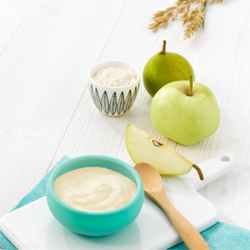 WP1: Processed baby-food and everyday feeding practices.
WP1: Processed baby-food and everyday feeding practices.
Research questions
- How is processed baby food understood and managed by producers and consumers in terms of health, sustainability and convenience?
- How does it fit into the routine practices of family life?
- How are consumers and feeding practices portrayed in the marketing of baby food?
- What would encourage healthier and more sustainable alternatives?
WP1 focuses on the consumption of processed baby food among families with children aged <18 months. Following recent media debates on food safety, sustainability and health, the understanding of processed baby food as a modern, healthy and scientifically-based product has been questioned.
Insecurities about nourishment, additives, contamination and taste have provoked parental anxieties leading producers to adapt their marketing strategies. Today, processed baby foods are marketed as a convenient and flexible solution for time-pressed modern parents, meeting their needs while conforming to official health advice. However, extensive packaging and long-distance transport, complex supply chains and changing dietary guidelines make the choice of baby food a complex issue.
Manufacturers have responded by developing marketing material meet the guidelines of national food authorities such as the Swedish NFA, while claiming to solve the difficulties facing contemporary parents. While the guidelines may include advice on health risks, actual cooking practices and sustainability issues are left to parents. WP1 will use interviews, focus groups and kitchen ‘go-alongs’ to examine how parents integrate ‘convenience’ baby food into their everyday feeding practices and how values such as sustainability, convenience, safety and health are negotiated and managed in practice.
WP1 will also undertake comparative work with four specific food companies and brands (Semper in Sweden, Hipp in Germany, Ella’s Kitchen in the UK and Lovemade in Denmark). A better understanding of how consumer information and advice is incorporated in everyday feeding practices will further understanding of how guidelines are translated in practice and how they might be improved.
Image: (c) Semper, used with Permission